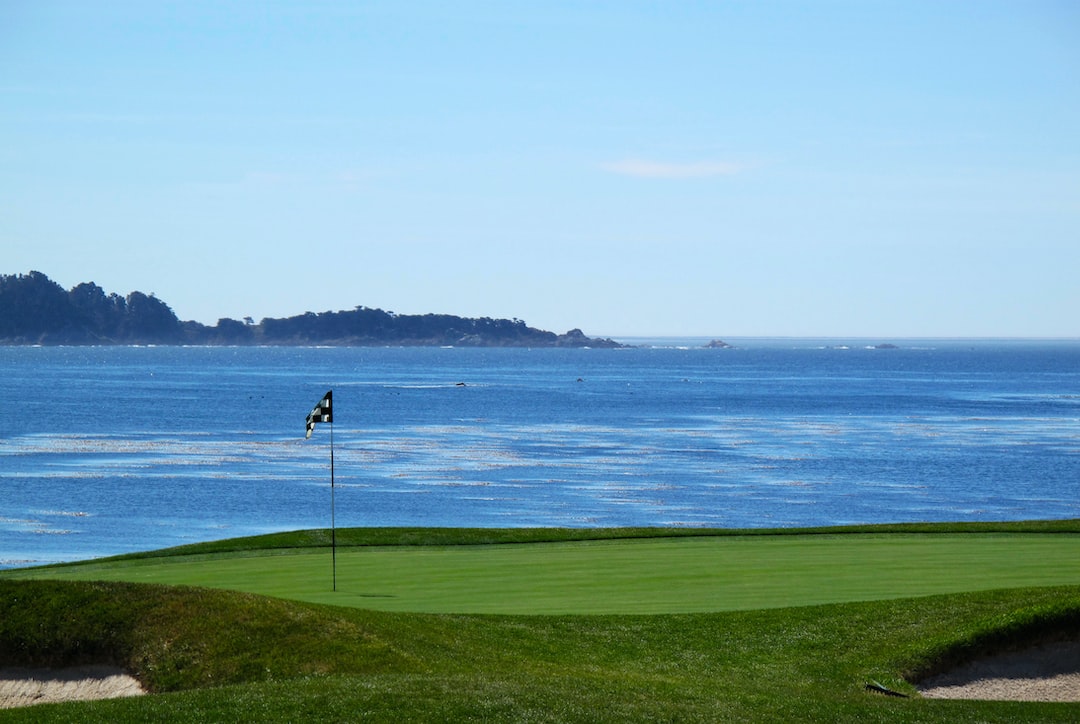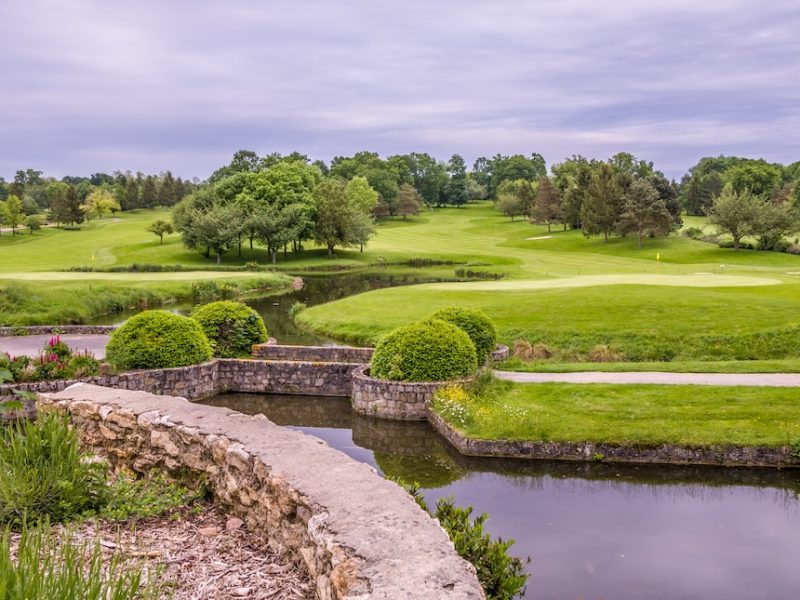Overview
What is the leading edge of a golf club?
The leading edge of a golf club refers to the part of the clubface that makes first contact with the ball during a swing. It is the forward-facing edge of the clubhead that helps to organize the interaction between the club and the ball. The leading edge plays a crucial role in determining the initial trajectory and spin of the ball. It is important for golfers to understand the design and construction of the leading edge as it can greatly impact their performance on the course.
Importance of the leading edge
The leading edge of a golf club plays a crucial role in the performance of the club. It is the part of the club that makes initial contact with the ball, and its design and construction can greatly affect the trajectory and accuracy of the shot. The leading edge determines how the club interacts with the turf and the ball, and it is essential for generating lift and spin. A well-maintained leading edge ensures consistent ball striking and optimal performance on the golf course.
Components of the leading edge
The leading edge of a golf club is made up of several key components that play a crucial role in its performance. These components include the sole, leading edge radius, and bounce angle. The sole of the club is the bottom part that interacts with the ground during a swing. It provides stability and helps prevent the club from digging into the turf. The leading edge radius refers to the curvature of the front edge of the clubface. It affects how the club interacts with the ball at impact, influencing factors such as launch angle and spin rate. The bounce angle is the angle between the leading edge and the sole. It helps the club glide through the turf, reducing the likelihood of digging and promoting cleaner contact with the ball. Understanding these components is essential for golfers looking to optimize their performance on the course.
Design and Construction
Materials used in the leading edge
The materials used in the leading edge of a golf club play a crucial role in its performance. Golf clubs are typically made from a combination of metals such as steel, titanium, and graphite. These materials are chosen for their strength, durability, and ability to transfer energy efficiently. Steel is commonly used in the construction of irons and wedges, while titanium and graphite are often found in drivers and fairway woods. The choice of material can significantly impact the feel and playability of the club, as well as the distance and accuracy of the shots. Golfers should consider their skill level, swing speed, and personal preferences when selecting a golf product with the right material composition for the leading edge.
Shape and curvature of the leading edge
The shape and curvature of the leading edge of a golf club play a crucial role in its performance. The leading edge is typically designed to be rounded, allowing for smooth interaction with the turf and reducing the likelihood of digging into the ground. This design helps to minimize resistance and maximize lift during the swing, resulting in improved ball flight. Additionally, the curvature of the leading edge affects the club’s ability to glide through the grass, reducing friction and allowing for a more efficient swing. Golfers should pay attention to the shape and curvature of the leading edge when selecting a club, as it can greatly impact their game.
Impact on ball flight
The impact of the leading edge on ball flight is significant. The design and construction of the leading edge, including the materials used and its shape and curvature, can greatly affect the trajectory and spin of the golf ball. A well-designed leading edge can help golfers achieve optimal launch conditions and maximize distance. Additionally, the leading edge plays a crucial role in the interaction between the clubface and the turf, influencing the amount of friction and the ability to control the ball. Therefore, golfers should pay attention to the maintenance and care of the leading edge to ensure consistent performance on the course.
Maintenance and Care
Cleaning the leading edge
Cleaning the leading edge of a golf club is an essential part of club maintenance. Over time, dirt, grass, and debris can accumulate on the leading edge, affecting the club’s performance. To clean the leading edge, use a soft brush or cloth to gently remove any dirt or debris. Avoid using harsh chemicals or abrasive materials that could damage the club’s finish. Regular cleaning of the leading edge helps ensure optimal contact with the ball, resulting in better accuracy and distance. It is recommended to clean the leading edge after each round of golf to maintain its performance.
Repairing damage to the leading edge
Repairing damage to the leading edge of a golf club is crucial for maintaining optimal performance. Golf ball retrieval can sometimes result in dings, dents, or scratches on the leading edge, which can affect the club’s ability to make clean contact with the ball. To repair minor damage, golfers can use a golf club repair kit that includes epoxy, sandpaper, and paint. For more severe damage, it may be necessary to consult a professional club repair technician. Regular inspection and maintenance of the leading edge can help prevent further damage and extend the lifespan of the golf club.
Protecting the leading edge from wear
To protect the leading edge from wear, golfers should take certain precautions. One important step is to avoid hitting the ground or other hard surfaces with the leading edge of the club. This can cause damage to the club and affect its performance. Golfers should also regularly inspect the leading edge for any signs of wear or damage. If any issues are found, they should be addressed promptly to prevent further damage. Additionally, golfers can use headcovers or club protectors to provide an extra layer of protection to the leading edge during transportation and storage.
Conclusion
The role of the leading edge in golf club performance
The role of the leading edge in golf club performance is crucial. It directly affects the contact between the club and the ball, ultimately determining the trajectory and distance of the shot. The leading edge is responsible for initiating the interaction with the ball, ensuring a clean and efficient strike. It plays a significant role in achieving accuracy and consistency in golf shots. Golfers rely on the leading edge to provide the necessary lift and control to their shots. As technology advances, golf club manufacturers are constantly exploring new materials and designs to optimize the performance of the leading edge.
Importance of maintaining the leading edge
Maintaining the leading edge of a golf club is crucial for optimal performance. The leading edge is responsible for making initial contact with the ball, and any damage or wear to this area can greatly affect the accuracy and distance of the shot. To ensure the longevity of the leading edge, regular cleaning and inspection are necessary. Players should regularly check for any signs of damage, such as dents or nicks, and take appropriate measures to repair or replace the club if needed. Additionally, using protective covers or headcovers when the club is not in use can help prevent unnecessary wear and tear on the leading edge.
Future developments in leading edge technology
As technology continues to advance, there are several exciting developments on the horizon for the leading edge of golf clubs. One area of focus is finding innovative ways to remove rust from golf clubs. Rust can affect the performance and longevity of a golf club, so finding effective methods to keep the leading edge rust-free is crucial. Another area of interest is exploring new materials that can enhance the durability and performance of the leading edge. Researchers are experimenting with advanced alloys and coatings that can provide better resistance to wear and tear. Additionally, there is ongoing research into the design and shape of the leading edge to optimize its aerodynamic properties and improve ball flight. These advancements in leading edge technology will undoubtedly have a significant impact on the future of golf club design and performance.


